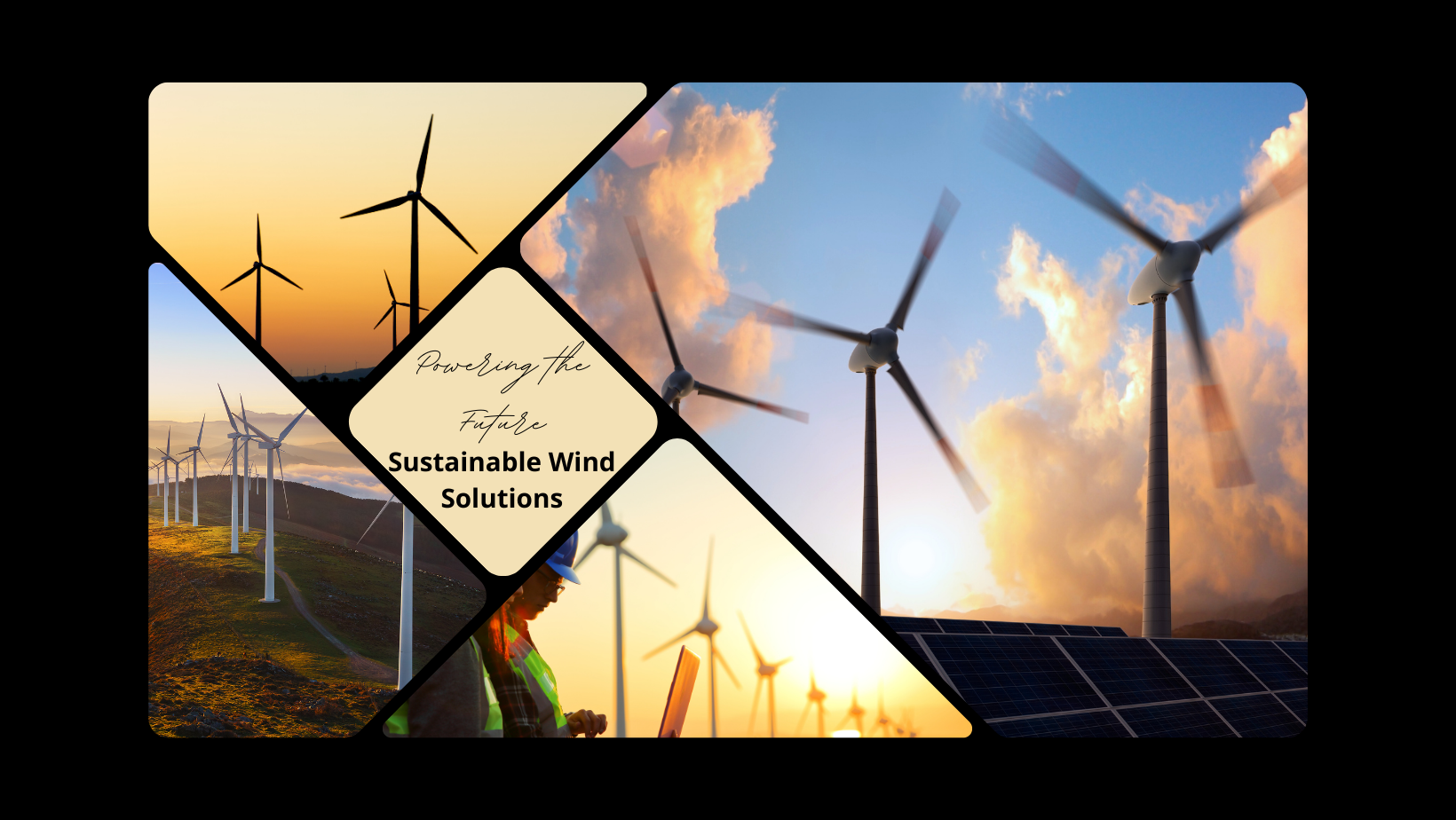Powering the Future: Revolutionizing Global Energy with Sustainable Wind Solutions
Powering the Future: Revolutionizing Global Energy with Sustainable Wind Solutions The OGM



The Facts About Climate Change and Energy Demand
Like many others, I used to think climate change was a hoax. I believed there were too many conspiracy theorists making false claims—those people with too much time on their hands and not enough science to back it up. I was dead wrong. Let’s take a look at the facts.
As 2023 drew to a close, the World Meteorological Organization sounded the alarm, declaring it the hottest year on planetary record. The Global Carbon Project delivered another sobering message. Amid companies scrambling to reach net zero, greenhouse gases from fossil fuels reached an all-time high in 2023. How can this be?
The answer is startlingly simple. The demand for world energy is far exceeding sustainable new energy solutions. The global energy demand comes from more energy use in a rapidly growing population. The population on our planet grows at a rate of 60,000 people every 8 hours. That alone is enough to tip the energy use scales into one of massive demand.
Experts believe that if we continue to explode in population, we will need 50% more energy than we currently produce to sustain humanity by 2050. DOUBLE the current energy production. That is staggering.
According to the International Energy Industry, “Despite many pledges and efforts by the government to tackle global warming, CO2 emissions from the energy industry have increased by 60% since the United Nations Framework Convention on climate change, which was signed in 1992.”
The Challenge is Also the Opportunity
How do we provide world energy access and enable robust economic growth, all while reaching net zero by 2050? That’s the question everyone is scrambling to answer.
The goal is to ensure we deliver energy that is clean and also builds an energy economy dominated by renewables. But even then, renewable energy production has a carbon footprint.
To reach net zero emissions by 2050, annual clean energy investment worldwide will need to more than triple by 2030 to around $4 trillion. This level of investment will create millions of new jobs, significantly lift global economic growth, and achieve universal access to electricity and clean cooking worldwide by the end of the decade.
Sustainable Energy
With energy production responsible for a staggering 73% of all emissions, we are now realizing that the solution to climate change may not be stopping any energy source but rather creatively adapting with innovation that ensures each energy source reaches a net zero outcome. That means the world’s greatest minds working together to decarbonize energy sources at an unprecedented rate. Encouragingly, approximately 42% of Fortune Global 500 companies have either achieved net-zero emissions or publicly pledged to do so by 2030.
The New Energy Mix
Today, when we think about the new energy mix, we think about a diverse range of energy sources that include coal, oil, gas, nuclear, hydropower, solar, wind, and biofuels.
None of the traditional sources of energy have gone away. Instead, we are called to find new ways to adapt and reach the goal of net-zero, through carbon capture and storage and other game-changing technologies that allow us to continue to use traditional fuels and build on sustainable new energy at the same time. So the way forward is not an either-or scenario of oil and gas vs. renewables, it’s both!
To meet global energy consumption, we see a rise in energy production in just about every single energy source. This, coupled with a global commitment to reduce carbon through creative innovation and new solutions, surprisingly adds up to a global energy opportunity, the likes of which the world has never seen.
We can see world energy demand and the pollution crisis in one of two ways:
- We need to get rid of coal, oil, and gas, and even then we are not likely to make it.
- Or
- We will build on the mix of energy sources, vary the rate of use within each sector, and apply innovation and technology to reach net zero in every energy source.
As a human race, in a population explosion, where energy demand will be ever-increasing, the latter solution will prevail and provide economic prosperity as a direct result of the application of new and unprecedented climate-conscious solutions.
So rather than arguing about what energy source is good or bad, let’s focus all our attention on reaching net zero in every energy sector. That’s the new energy-sustainable goal that will elevate us in these challenging times. It’s the innovators, sustainable energy developers, technological wizards, and net zero adapters that are going to lead us into the future. In other words, it’s “Our Great Minds”, that will pave the way to a world that cares for the planet and brings prosperity and opportunity all at the same time.
Wind Energy
In the realm of renewable energy, onshore wind stands as a tried-and-tested champion, backed by a robust global supply network. Offshore wind is poised for a meteoric rise in the renewable energy arena as well. By harnessing the formidable power of ocean winds, offshore installations are strategically positioned to benefit from stronger and more consistent wind patterns.
In the pursuit of net-zero emissions by 2050, wind power—both onshore and offshore—takes center stage alongside solar energy. Substantial increases in annual wind capacity additions are imperative to reach world energy demand and the net-zero pathway by 2030.
Realizing the envisioned levels of annual wind electricity generation necessitates a concerted effort to bolster support for wind farms, both on land and at sea. This entails streamlining permitting processes, garnering public backing, identifying optimal sites, driving down costs, and expediting project development timelines. By focusing our energies on these critical areas, we pave the way for wind power to play an indispensable role in propelling us toward a cleaner, sustainable future.
SDGs, Targets, and Indicators
1. Which SDGs are addressed or connected to the issues highlighted in the article?
- SDG 7: Affordable and Clean Energy
- SDG 9: Industry, Innovation, and Infrastructure
- SDG 13: Climate Action
- SDG 17: Partnerships for the Goals
The article discusses the need for sustainable energy solutions, the impact of climate change, and the importance of collaboration and innovation to address these issues. These align with the goals of SDG 7 (Affordable and Clean Energy), SDG 9 (Industry, Innovation, and Infrastructure), SDG 13 (Climate Action), and SDG 17 (Partnerships for the Goals).
2. What specific targets under those SDGs can be identified based on the article’s content?
- Target 7.2: Increase substantially the share of renewable energy in the global energy mix
- Target 7.3: Double the global rate of improvement in energy efficiency
- Target 9.4: Upgrade infrastructure and retrofit industries to make them sustainable
- Target 13.2: Integrate climate change measures into national policies, strategies, and planning
- Target 17.16: Enhance the global partnership for sustainable development
The article emphasizes the need to increase renewable energy production, improve energy efficiency, upgrade infrastructure for sustainability, integrate climate change measures into policies, and enhance global partnerships for sustainable development.
3. Are there any indicators mentioned or implied in the article that can be used to measure progress towards the identified targets?
- Indicator 7.2.1: Renewable energy share in the total final energy consumption
- Indicator 7.3.1: Energy intensity measured in terms of primary energy and GDP
- Indicator 9.4.1: CO2 emissions per unit of value added
- Indicator 13.2.1: Number of countries that have integrated climate change measures into national policies, strategies, and planning
- Indicator 17.16.1: Number of countries reporting progress in multi-stakeholder development effectiveness monitoring frameworks
The article implies the need to measure the renewable energy share in total energy consumption, energy intensity in relation to GDP, CO2 emissions per unit of value added, integration of climate change measures into national policies, and progress in multi-stakeholder development effectiveness monitoring frameworks.
Table: SDGs, Targets, and Indicators
| SDGs | Targets | Indicators |
|---|---|---|
| SDG 7: Affordable and Clean Energy | Target 7.2: Increase substantially the share of renewable energy in the global energy mix | Indicator 7.2.1: Renewable energy share in the total final energy consumption |
| SDG 9: Industry, Innovation, and Infrastructure | Target 9.4: Upgrade infrastructure and retrofit industries to make them sustainable | Indicator 9.4.1: CO2 emissions per unit of value added |
| Target 9.4: Upgrade infrastructure and retrofit industries to make them sustainable | Indicator 9.4.1: CO2 emissions per unit of value added | |
| SDG 13: Climate Action | Target 13.2: Integrate climate change measures into national policies, strategies, and planning | Indicator 13.2.1: Number of countries that have integrated climate change measures into national policies, strategies, and planning |
| SDG 17: Partnerships for the Goals | Target 17.16: Enhance the global partnership for sustainable development | Indicator 17.16.1: Number of countries reporting progress in multi-stakeholder development effectiveness monitoring frameworks |
Behold! This splendid article springs forth from the wellspring of knowledge, shaped by a wondrous proprietary AI technology that delved into a vast ocean of data, illuminating the path towards the Sustainable Development Goals. Remember that all rights are reserved by SDG Investors LLC, empowering us to champion progress together.
Source: theogm.com

Join us, as fellow seekers of change, on a transformative journey at https://sdgtalks.ai/welcome, where you can become a member and actively contribute to shaping a brighter future.







